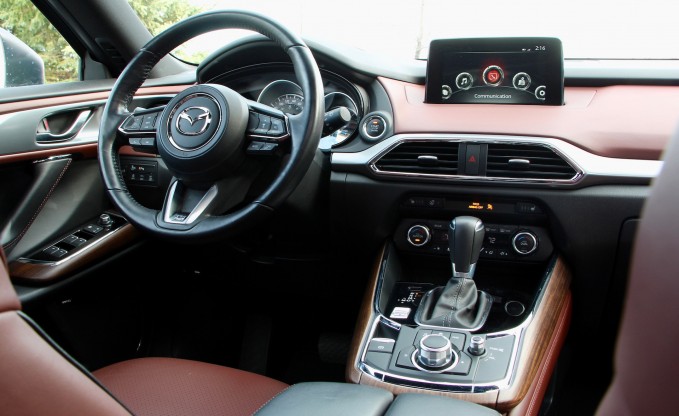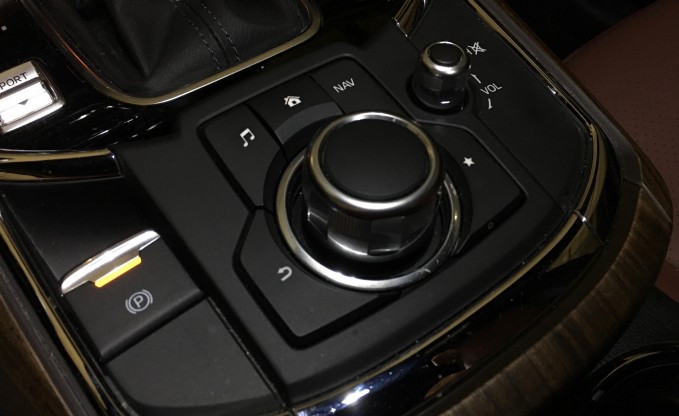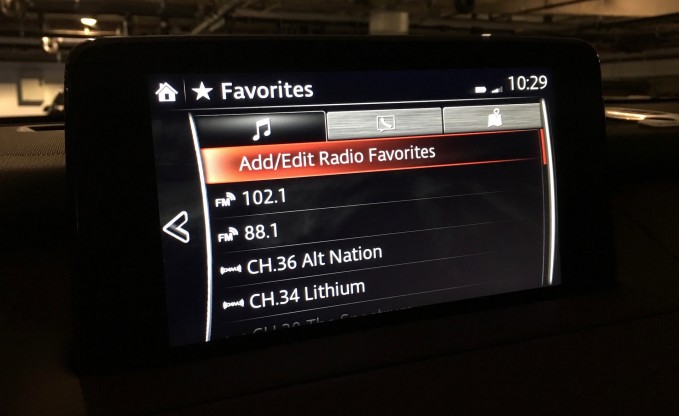After three months in the CX-9, we’ve gotten to know the technology of this flagship Mazda very well, and it is time for us to weigh in on how well they’ve executed the various systems that help Mazda keep pace in the tech race.
While every passing week proves that the CX-9 is a driver’s car through and through, some days, you just want your car to deliver you to the office with the least amount of stress possible. Although Mazda isn’t anywhere close to Tesla AutoPilot or Mercedes Intelligent Drive in terms of autonomous driving, there are a handful of systems that provide a security blanket, while others take a little bit of the workload off the driver.
The most prominent driving convenience feature of the CX-9 and many other recent cars has to be adaptive cruise control (called Mazda Radar Cruise Control on the Mazda order sheet), which allows you to set a chosen top speed, and the vehicle maintains that speed but also slows down when approaching slower traffic. At highway speeds, the CX-9 does so seamlessly, calmly keeping your designated speed and a gap that you can set on the steering wheel controls, both of which are displayed in the head-up display unit along with current speed. In most cases, the CX-9 slows gradually when approaching slower traffic, though not early enough when approaching stand stills or crawling traffic jams.

My main complaint is that Mazda’s adaptive cruise cuts out below 15 mph, unlike some (like the Honda Civic!) that can bring you all the way down to a crawl, and even handle brief full stops during stop-and-go traffic, which is the main reason I would want to have such a system. The only other complaint I had with the adaptive cruise system is the unclear buttons on the steering wheel, where Mode eliminates the ‘adaptive’ part and leaves you with conventional cruise control, which can be surprising and disconcerting if you’re not expecting it.
Thankfully, the CX-9 also has forward collision alert (Distance Recognition Support System or DRSS and Forward Obstruction Warning in Mazda-speak), which broadcasts a sharp beep when coming up too fast on vehicles ahead. While we rarely needed this, it did on a couple occasions get my full attention when I may have been daydreaming or staring too hard at a Z06. However, the system will also go off when adaptive cruise control is active, which seems odd to me, because shouldn’t the car just slow itself down instead of beeping and flashing? Anyhow, complementing the forward collision warning are lane departure warning and lane-keep assist, which warn you when approaching dividing lines and gently steers you back into your lane. We had these set up to very mild intervention, so we found them unintrusive and just enough of a nudge in the right direction to keep us from straying and focused on the driving task.
Catch Up on our Mazda CX-9 Intro, Update, Towing Test and Road Trips
Off the highway and in parking lots, although the CX-9 features only a rearview camera (compared to 360-degree views in some competitors), it is complemented by backup sensors that warn you as you approach obstructions. Better yet, rear cross-traffic alert flashes warning icons and beeps when a vehicle or pedestrian is crossing behind you as you back up, sometimes even before they enter the camera view or your field of vision, so this is a huge assist from the vehicle when in tight spots.
Meanwhile, there is also no shortage of technology inside the car to keep you entertained and informed, accessible via the Mazda Connect interface. As mentioned previously, we really loved this system at first glance and when we first encountered it in previous models. It has a large, clear, highly visible screen atop the dash close to one’s driving sightlines, and the graphics are modern and appealing. While it is a touchscreen, it can only be controlled by touch when the vehicle is stationary, and some functions, like rearranging your audio favorites, are also only available when parked.

The home screen has five main menus: phone, audio, navigation, settings, and applications. Apps is the most useless with some vehicle information that one can find in the gauge cluster anyway. But speaking of the gauge cluster, it was a bit annoying that you can only scroll one way through the trip computer and info screens available there, but there are only a few options, so I got over it eventually.
The control knob on the center console is easy to reach and has shortcut buttons for the home screen, audio, navigation, and favorites. If there is one thing I would change about that arrangement, it would be to replace the nav shortcut with one to the phone, which I tend to use far more frequently than navigation. The map does look pretty, especially with 3D renderings of major buildings and various points of interest available to display.
The favorites button takes you to audio presets first, and phone favorites is just a nudge of the central knob past that, with a third tab for favorite destinations. Tabbing between screens isn’t as slow as Honda’s or Subaru’s systems, but it’s still a fraction of a second longer than I want, and each delay tends to accumulate frustration. Whenever I needed to go several menus deep to find a phone number or select a playlist on my phone instead of a radio preset, it would just add up to a less than satisfactory experience. Mazda should take a lesson from Toyota and Ford, which have some radio presets and even phone favorites customizable right on the multi-panel home screen.

And while this descends into seriously spoiled-auto-reviewer territory, Mazda could use an update to its satellite radio functions, which does not offer rewind or record functions as seen on Kias and other brands. Otherwise the settings, audio and phone controls are mostly logical, although the icons for functions at the bottom of the screen take a bit of getting used to, and switching tracks on a Bluetooth- or USB-connected device just takes too many menus. Phone and audio integration would be greatly improved by Android Auto or Apple Carplay, which Mazda has yet to adopt.
That’s a lot of complaints and nitpicking, so clearly there’s a lot of work to do for Mazda in refining their technology, but it’s not as bad as it may seem. On any given commute or weekend trip, there is a good audio system with some clever shortcuts and nifty technology like head-up display in addition to reassuring driver aids, so it’s an easy car to spend time in.



Leave a Reply